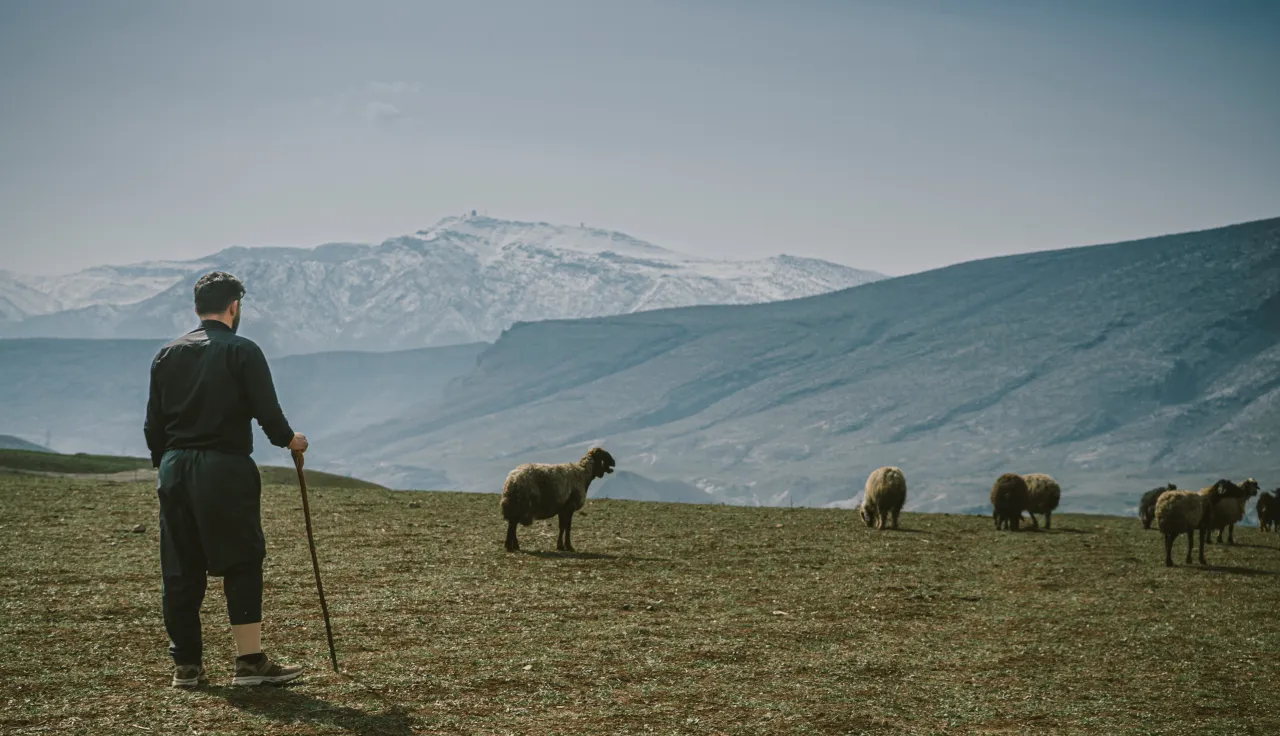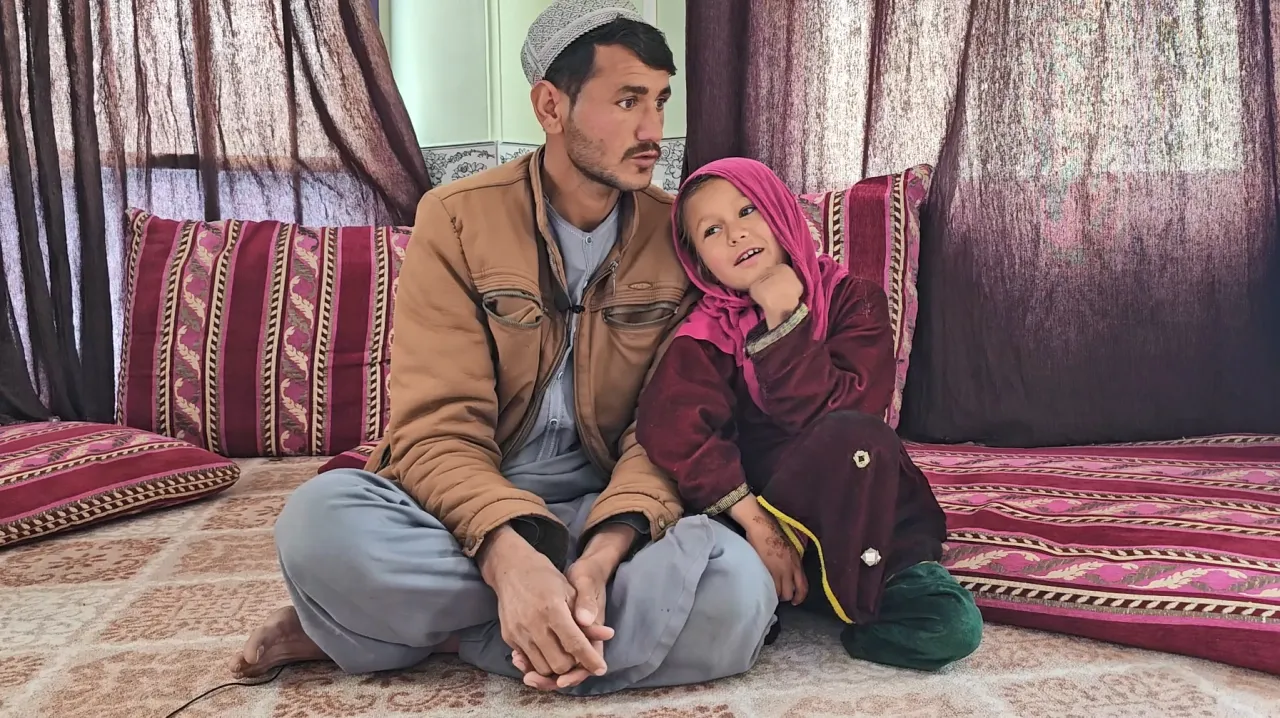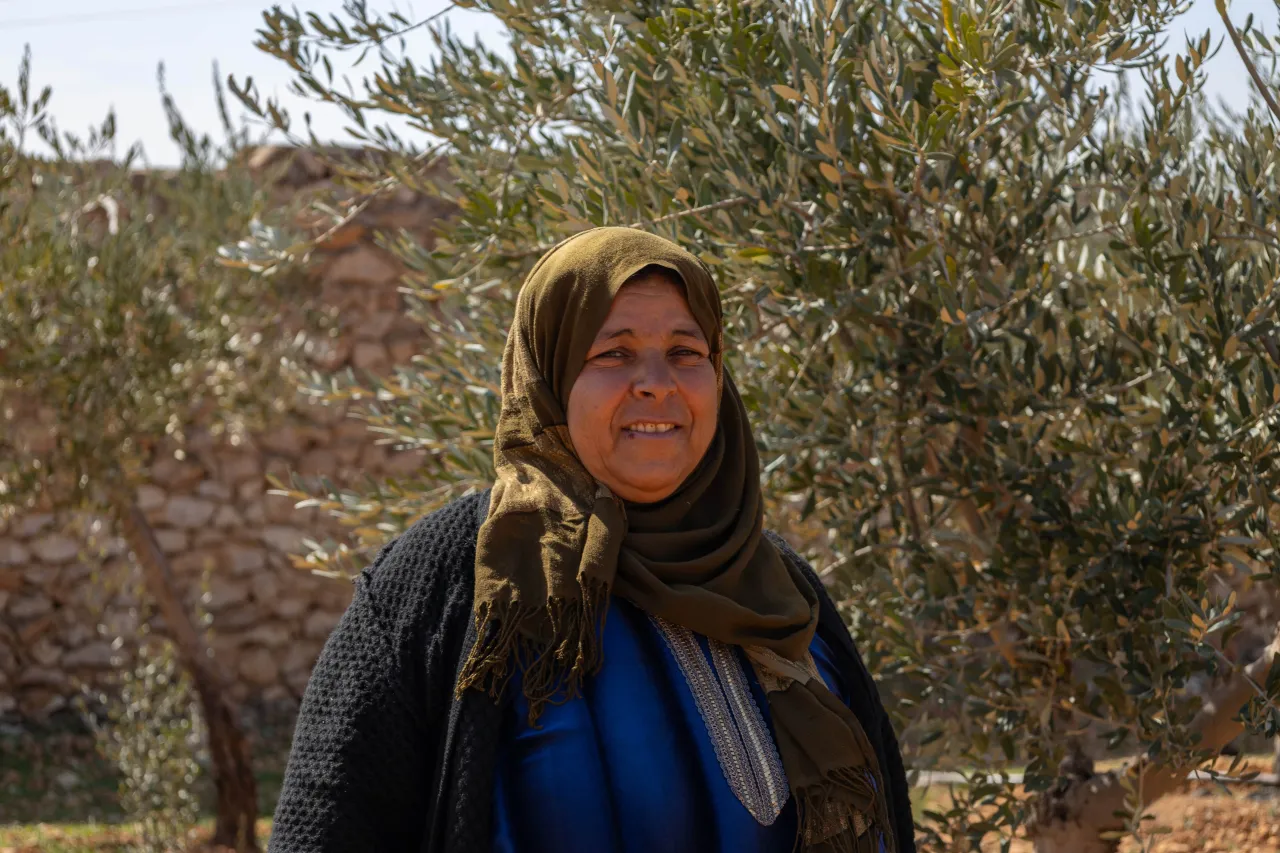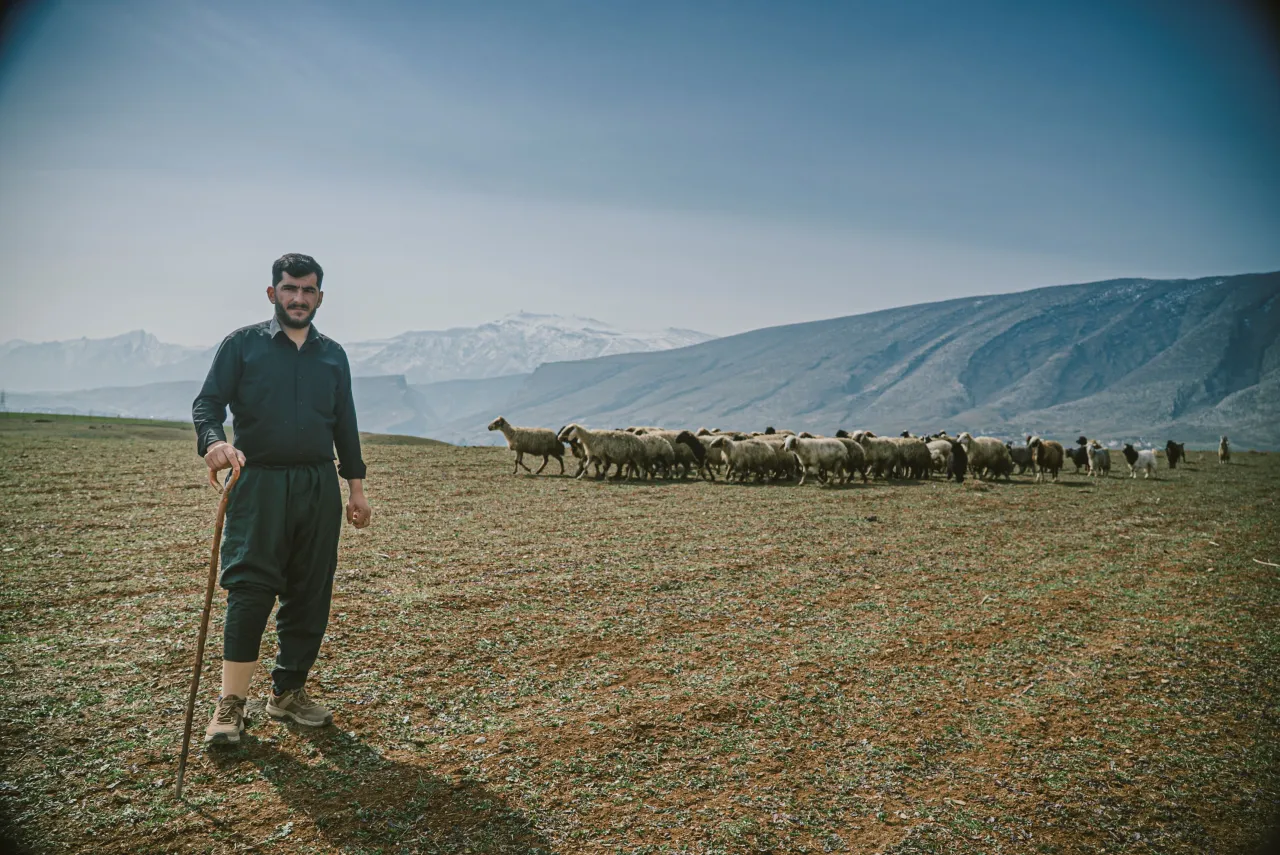The long shadow of war: Landmines, the unjustifiable weapons of long-term suffering

Anti-personnel landmines do not discriminate. Buried in fields, footpaths and forests, they wait silently - sometimes for decades - until someone unknowingly steps on them. The result is often catastrophic: lives lost, limbs shattered, futures altered.
While casualty numbers fluctuate, the pattern of harm remains unchanged: civilians – the very people who should be protected from war’s effects – continue to bear the brunt, making up over 80 per cent of mine and explosive remnants of war (ERW) casualties, with nearly half being children (Landmine Monitor Report 2024).
Landmines trap communities in poverty by cutting them off from safe access to health care, education, and farmland. They delay post-conflict recovery, block reconstruction, and turn daily survival into a life-threatening challenge – whether aid workers trying to reach isolated communities, farmers working to recover land, displaced people returning home, or children playing outdoors.
Landmines are not only weapons of war – they are weapons of long-term suffering. Their use and indiscriminate effects violate fundamental principles of international humanitarian law.
The Mine Ban Treaty (Ottawa Treaty), which prohibits the use, stockpiling, and production of anti-personnel mines, has been ratified by over 160 countries. While progress has been made in banning these weapons and decontaminating land, millions of mines remain buried, posing catastrophic threat to life.
Every year on 4 April, the International Day for Mine Awareness and Assistance in Mine Action reminds the world to take notice of the silent, hidden threat that landmines continue to pose - often long after the fighting ends. For those who survive an explosion, the path to recovery is long, painful, and deeply personal.
The lasting impact of landmines: Faces of resilience

Yemen: Abdulrahman – a boy with big dreams
At six years old, while playing outdoors near his home in Al Baydha, Yemen, Abdulrahman’s life changed forever when he stepped on a landmine. The explosion caused severe injuries, and caused Abdulrahman to lose part of his leg.
Yemen is one of the most heavily landmine-contaminated countries in the world, with decades of conflict leaving large swathes of land littered with explosive remnants. Thousands of civilians have been killed or injured, and the danger continues to hinder everyday life and humanitarian access.
With no specialized medical facilities nearby, following the accident Abdulrahman and his family needed to travel over 200 km to Sana'a for his rehabilitation. Covering the costs of travel and treatment has been a constant struggle for the family in a country already facing hardships.
Despite these difficulties, Abdulrahman has received an artificial limb from the physical rehabilitation center in Sanaa. As he grows, maintaining and adjusting the prosthesis requires regular visits to the center – vital to ensuring the device fits properly and allows him to move comfortably.
Today, Abdulrahman is in the 11th grade. He regularly attends school, interacts with friends, and participates in activities adapted to his abilities. Despite – or perhaps buoyed by – the challenges he has faced, he dreams of pursuing a career in aviation engineering.

Afghanistan: Zahida’s young life, forever changed
Afghanistan remains one of the countries most vulnerable to explosive hazards. These weapons pose great risks to communities simply going about their daily lives – famers working their land, children making their way to school, families moving from place to place. In 2024, as per the ICRC’s records, 455 civilians (of which 359 were children) suffered fatalities or injuries in 234 incidents linked to explosive hazards.
One of the families whose life was turned upside down by one of these devices was that of four-year-old Zahida. She was playing with her friends on a farm near her home when she went to investigate an object on the ground. The object turned out to be an unexploded ordnance, and as the other children rushed to grab it from her it exploded. Zahida lost her leg.
Together with the ARCS, our teams conducted several risk awareness and safer behaviour sessions across the country, reaching out to more than 240,000 people, more than half of whom were children, in weapon contaminated areas.

Syria: A mother missing her child, husband and a sense of safety for her family
Rabea, known as Um Bashar, is a mother from the village of Barlahin in eastern rural Aleppo. Like many families, she and her loved ones were forced to flee their home for years due to violence. When they returned in 2017, they were met with unimaginable tragedy. Her husband and ten-year-old son stepped on a landmine while walking on their own land – both were killed.
In an instant, Rabea lost both her husband and her child. The pain of their deaths was compounded by the helplessness she felt, fearing for the lives of her other children on her mine-contaminated land. The family was unable to bury their loved ones in the village cemetery, as the area was too dangerous, so they had to lay them to rest outside the village, far from home.
Fear took over their daily lives. Sending the children to school became a daily nightmare, as the road leading there was contaminated with landmines. Their land, their source of income, had become deadly, their livestock unable to graze safely.
Recently however, hope has trickled back to Rabea’s family. A team from the ICRC cleared their land of war remnants, making it safe again. She describes the overwhelming relief that has filled their home. For the first time in years, they feel safe. Her children can now go to school without fear, they can tend to their land, care for their livestock, and harvest their olive trees.

Democratic Republic of the Congo: A little boy's game ends in severe injury
Franck was playing outside his home with a friend when they found something round that looked like a maracca. When the curious little boys picked it up and shook it, they heard there was something inside. Intrigued, they shook it even harder – their goal, of course, to open this maracca to find out what was inside. After hitting it on a rock to try to break it open, smoke erupted from the device, severely burning Franck's right hand.
He is now being treated at the Ndosho hospital in Goma, and being taken care of at home by his 16-year-old sister Clarisse.
Franck would like to go back to school, but he is worried because, being right-handed, he doesn't know how he will be able to follow the lessons with this disability. His favorite subject is geography, and he is fascinated by understanding how the earth turns and how the universe works.

Iraq: A man’s loss of his livelihood and a profession he loves
Omar Aziz remembers walking in the mountains of Shaqlawa in Iraq with his father, learning about raising cattle and tending sheep. It was his livelihood and his life’s work until everything changed in one shattering instant. While tending his flock he unknowingly stepped on a hidden landmine and his horrific injuries resulted in the loss of his leg and with it the profession he had learned and loved since childhood, and along with this, his ability to provide for his family.
"It was challenging to stay at home, unable to walk,” says Omar. “In one day I became disabled and jobless. I couldn't afford the cost of living, and I had to leave my house because I couldn’t pay rent or feed my children,” Omar said.
Eight months after his injury, Omar received a prosthesis from the ICRC at the Erbil Physical Rehabilitation Centre in the Iraqi Kurdistan Region. He learned about the centre’s free services through a friend – also a shepherd – who had lost his leg due to weapon contamination as well. Now, Omar is slowly adapting to his new reality with the help of his prosthesis.
The ICRC's role in recovery and prevention
The ICRC works in some of the world’s most mine-affected countries, supporting victims through every stage of recovery:
- Prosthetics and orthotics: The ICRC supports over 150 physical rehabilitation centres in 30 countries, providing custom prosthetic limbs and mobility aids to thousands of survivors each year.
- Physical rehabilitation: Beyond the device itself, patients receive physiotherapy, gait training, and follow-up care to rebuild strength and confidence.
- Mental health and psychosocial support: Recovery is more than physical. Counselling and peer support help survivors process trauma and reconnect with their communities.
- Mine risk education: In areas where mines remain, ICRC teams work with local partners to deliver life-saving awareness sessions, especially to children.
- Working to remind parties of compliance with the law: Through technical guidance and humanitarian diplomacy, the ICRC promotes adherence to international law and the Anti-Personnel Mine Ban Convention which sets clear mine-clearance targets.
A choice with devastating consequences
Despite some claims that these weapons can be used in full compliance with IHL, the unacceptable harm they cause tells a different story. These weapons are not battle-winners – even if they are initially placed on frontlines, they don’t stay there – they end up killing civilians long after soldiers have gone home.
The battlefield reality:
- APMs often cause casualties among the very troops deploying them, including friendly forces.
- They hinder military mobility.
- They will kill children going to school, farmers plowing their fields, civilians trying to return to their homes, and peacekeepers and de-miners.
Calling on states to uphold the Anti-Personnel Landmine Convention
No one should lose a limb for a war they didn’t choose. On Landmine Awareness Day, we stand with survivors and continue our work to make every step a safe one. The courage of the survivors reminds us that even in the aftermath of conflict, there is always a way forward.



